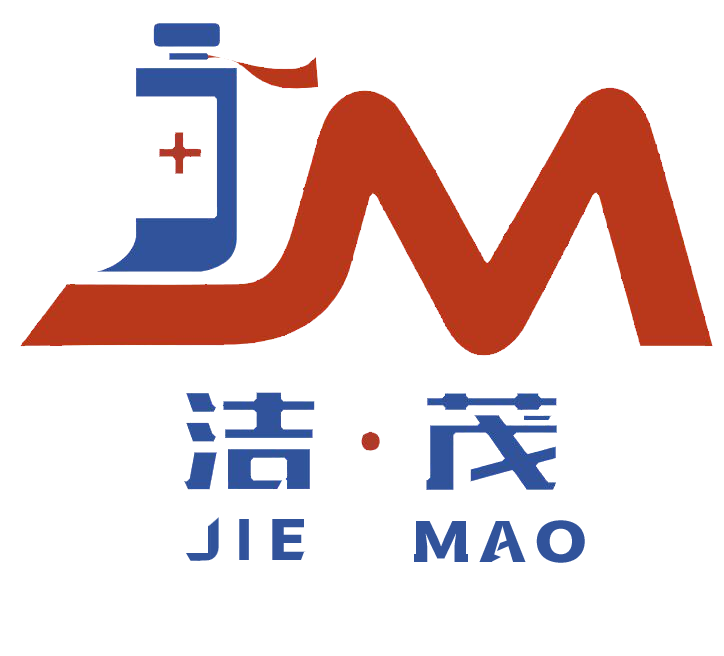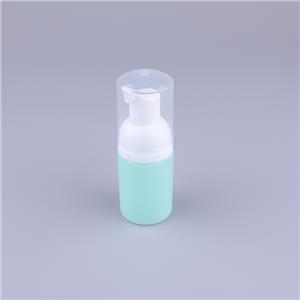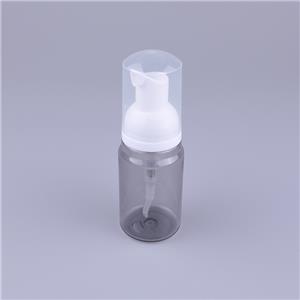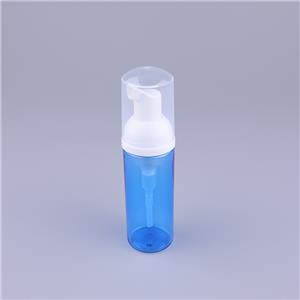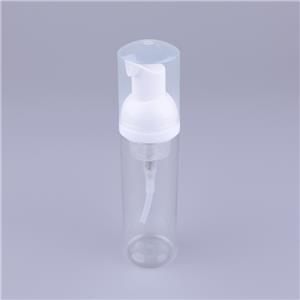- Home
- >
- News
- >
- Public Information
- >
- Application of plasticizers in PET
Application of plasticizers in PET
PET (polyethylene terephthalate), as a linear thermoplastic polyester with high crystallinity (usually 40% -60%), has high transparency, excellent mechanical strength, and barrier properties. However, native PET has shortcomings such as high brittleness, poor low-temperature impact resistance, and insufficient processing flowability. Plasticizers reduce the glass transition temperature (Tg) and crystallinity of PET by breaking the hydrogen bonds and van der Waals forces between its molecular chains, endowing PET with flexibility, processability, and low-temperature adaptability. They play a key functional optimization role in PET applications such as food packaging, pharmaceutical packaging, films, and engineering plastics. With the increasing demand for safety and environmental protection in the industry, the application of plasticizers in PET has shifted from "simple functional addition" to "high efficiency, low migration, and greenization", forming a development pattern that emphasizes both technological innovation and safety control.
1、 The core role of plasticizers in adapting PET: cracking the performance shortcomings of native PET
Native PET has obvious performance limitations in processing and use due to its strong molecular chain regularity and large intermolecular forces. Plasticizers can precisely act on the molecular structure of PET to solve the following core problems and lay the foundation for expanding the application scenarios of PET.
1. Reduce processing difficulty: improve PET melt flowability and formability
The melting point of PET is about 255-260 ℃, and the glass transition temperature (Tg) is about 70-80 ℃. The viscosity of the native PET melt is high (the melt flow rate is only 1-3g/10min at 280 ℃), and problems such as insufficient filling and surface defects of the product are prone to occur during injection molding, extrusion, blow molding and other processing. Plasticizer molecules (such as fatty acid esters and phosphate esters) can be inserted between PET molecular chains, weakening the entanglement between molecular chains and reducing melt viscosity
When the amount of plasticizer added is 3% -5%, the flow rate of PET melt can be increased to 5-8g/10min, and the processing temperature can be reduced by 10-15 ℃, reducing energy consumption and thermal degradation risk;
For thin-walled PET products (such as microfluidic chips with a thickness of less than 0.1mm and precision electronic component casings), plasticizers can improve the melt filling flowability, avoid defects such as material shortage and bubbles caused by high flow resistance, and improve the molding qualification rate to over 95%.
2. Improve mechanical properties: enhance PET flexibility and low-temperature impact resistance
Native PET behaves as a rigid material at room temperature, with a fracture elongation of only 5% -10%. At low temperatures (below -20 ℃), the impact strength significantly decreases (notch impact strength<2kJ/m ²), making it brittle and difficult to meet the requirements of flexible packaging, low-temperature environmental use, and other scenarios. Plasticizers optimize the mechanical properties of PET by reducing its crystallinity and increasing its molecular chain mobility
Adding 5% -8% dioctyl adipate (DOA) or dioctyl sebacate (DOS) can increase the elongation at break of PET to 30% -50%, significantly enhancing its flexibility. It can be used to make foldable PET food packaging films and bendable PET medical catheters;
Plasticizers can lower the glass transition temperature (Tg) of PET from 70 ℃ to 40-50 ℃, and increase the low-temperature (-20 ℃) impact strength to 5-8kJ/m ², meeting the impact resistance requirements of PET packaging in cold chain logistics (such as frozen food trays and low-temperature pharmaceutical packaging) and reducing the rate of low-temperature transportation damage.
3. Adjusting Barrier Performance: Adapting to the Penetration Control Requirements of Specific Media
PET has good barrier properties against oxygen and water vapor, but poor barrier properties against some organic small molecules (such as oils and organic solvents), and the barrier properties of native PET are greatly affected by crystallinity - high crystallinity can easily produce grain boundary defects, which in turn reduce barrier properties. Plasticizers optimize barrier properties by regulating PET crystal morphology and molecular chain arrangement
For PET edible oil packaging, adding 2% -4% epoxidized soybean oil (ESO) can reduce the disordered arrangement of PET molecular chains, lower oil permeability (from 0.8g/(m ² · 24h) to 0.3g/(m ² · 24h)), and extend the shelf life of edible oil;
In PET pharmaceutical packaging (such as oral liquid bottles), adding an appropriate amount of phosphate plasticizers can fill the crystallization defects of PET, improve the barrier properties against volatile components in the drug solution, and avoid the loss of drug efficacy.
4. Improve aging and weather resistance: Extend the service life of PET products
Native PET is prone to oxidative degradation of its molecular chains under long-term light exposure (especially ultraviolet radiation) and high temperature environments, resulting in yellowing of the product and a decrease in mechanical properties (such as a tensile strength attenuation rate>30%/year), which limits its outdoor or long-term use scenarios (such as outdoor PET billboards and long-lasting food packaging). Partial functional plasticizers (such as epoxy and hindered phenolic composite plasticizers) have both plasticizing and antioxidant, UV resistant functions:
Epoxy soybean oil (ESO) not only plasticizes, but its epoxy groups can also capture the free radicals generated by PET degradation, slow down the oxidative degradation rate, and increase the tensile strength retention rate of PET products from 50% to over 80% after 12 months of outdoor exposure;
Composite plasticizers (such as DOS combined with UV absorber UV-531) can simultaneously reduce PET Tg and absorb UV radiation, suitable for outdoor use of PET films, building materials and decorative panels, extending their service life to 3-5 years.
2、 Types of plasticizers commonly used in PET: characteristics, application scenarios, and adaptability
Based on differences in chemical structure and performance, commonly used plasticizers in PET can be divided into four categories: aliphatic diacids, epoxides, phosphates, and polyesters. Each type of plasticizer has significant differences in compatibility, migration, and temperature resistance, and needs to be selected accurately according to the usage scenarios of PET products (such as food contact, high temperature environments, and low temperature environments).
1. Aliphatic dicarboxylic acid esters: preferred for high compatibility and low temperature adaptability
Aliphatic binary ester plasticizers, represented by adipic acid esters and sebacic acid esters, contain long-chain alkyl groups in their molecular structures. They have good compatibility with PET molecular chains and excellent low-temperature performance, making them the mainstream choice for low-temperature impact modification of PET.
Dioctyl adipate (DOA):
Good compatibility (compatibility ratio with PET can reach 1:10), high plasticizing efficiency, adding 5% can reduce the Tg of PET to below 50 ℃, and increase the low-temperature (-20 ℃) impact strength by 3-4 times;
The disadvantage is poor temperature resistance (long-term use temperature ≤ 60 ℃), easy migration, mainly used for PET films (such as frozen food packaging film) and PET hoses (such as cosmetic hoses) in low-temperature environments.
Di (2-ethylhexyl) sebacate (DOS):
The molecular chain is longer (with a carbon chain length of 10 carbons), and the temperature resistance is better than DOA (long-term use temperature ≤ 80 ℃). The migration rate is 30% lower than DOA, and the low-temperature impact resistance is better (the impact strength at -40 ℃ still reaches 4kJ/m ²);
Suitable for PET products that require both low and medium temperatures, such as PET turnover boxes for cold chain logistics and low-temperature medical PET sample storage tubes.
2. Epoxy class: the core choice for safe plasticizers
Epoxy plasticizers contain epoxy groups in their molecules, which not only have plasticizing functions but also can capture free radicals generated by PET degradation. They also have antioxidant properties, low migration rates, and low toxicity, meeting the safety requirements for food contact and pharmaceutical packaging. They are the core category of PET safety modification.
Epoxy soybean oil (ESO):
Widely sourced (renewable plant materials), low price, good compatibility with PET (addition amount of 3% -6%), migration rate only 1/5 of DOA, and has passed food contact safety certifications such as EU No.10/2011 and China GB 4806.10;
Mainly used for food contact PET products, such as PET beverage bottle cap gaskets and PET food packaging films, which can improve flexibility while avoiding plasticizer migration and food contamination;
The additional advantage is strong weather resistance, which can be used for outdoor PET products (such as PET sunshade films) to slow down UV aging.
Epoxy fatty acid methyl ester (EFAME):
The molecular structure is simpler, and the plasticizing efficiency is 20% higher than ESO. Adding 4% can increase the PET elongation at break to 40%, and the flowability is better. It is suitable for PET injection molded products (such as thin-walled PET toys and precision electronic shells);
The disadvantage is that the temperature resistance is slightly poor (long-term use temperature ≤ 70 ℃), and it needs to be used in combination with temperature resistant plasticizers.
3. Phosphates: Integrated temperature resistance and flame retardancy
Phosphate ester plasticizers contain phosphorus elements in their molecules, which combine plasticizing and flame retardant properties. They have excellent temperature resistance (long-term use temperature ≥ 100 ℃), but poor compatibility (compatibility ratio with PET is usually ≤ 1:20). They are mainly used in the field of PET engineering plastics that require high temperature resistance and flame retardancy.
Triphenyl phosphate (TPP):
Outstanding flame retardant performance (oxygen index up to 28%), good temperature resistance (thermal decomposition temperature>250 ℃), adding 8% -10% can make PET meet UL94 V-0 flame retardant standards, while improving the thermal stability of PET;
Suitable for high-temperature resistant PET products, such as PET electronic component casings and automotive PET interior parts (flame retardant required), but due to poor compatibility, it needs to be compounded with compatibilizers (such as PET-g-MAH) to avoid precipitation.
Trioctyl phosphate (TOP):
The compatibility is better than TPP (with a compatibility ratio of 1:15 with PET), the plasticizing efficiency is high, and the toxicity is low (LD50>3000mg/kg). It can be used for PET products that are sensitive to toxicity, such as PET medical device casings (requiring high temperature resistance and flame retardancy) and children's PET products;
The disadvantage is that the flame retardant performance is slightly weaker than TPP, and the addition amount needs to be increased (10% -12%) to achieve the same flame retardant effect.
4. Polyester: benchmark for low migration and long-term stability
Polyester plasticizers (such as polypropylene adipate and polybutylene sebacate) are high molecular weight plasticizers (molecular weight 1000-5000), and their compatibility with PET is achieved through molecular chain segment matching. They have extremely low migration rates (<0.1%/year), excellent temperature and aging resistance, and are the first choice for long-term use of PET.
Polyethylene glycol adipate (PPA):
The molecular weight is about 2000, with strong entanglement with PET molecular chains, a migration rate of only 1/10 of DOA, no significant precipitation after long-term use (5 years), and good temperature resistance (long-term use temperature ≤ 90 ℃);
Suitable for PET products that require long-term use, such as PET pipes (for transporting hot water or corrosive liquids) and PET building decorative panels, which can maintain long-term flexibility and stability.
Polybutylene sebacate (PBS):
The molecular chain contains flexible ether bonds, with a plasticizing efficiency 15% higher than PPA, and is biodegradable (degradation rate>90% in 180 days under composting conditions), which meets environmental requirements;
Suitable for biodegradable PET composite products, such as PET/PLA biodegradable packaging film and disposable PET tableware, which can improve flexibility without affecting overall degradation performance.
3、 Specific practice of plasticizers in different application fields of PET: scenario based formulation and performance optimization
The application of plasticizers in PET needs to be formulated according to the functional requirements of the product (such as food contact, high temperature resistance, flame retardancy) and the usage environment (such as low temperature, outdoor, pharmaceutical scenes). The amount of additives and the selection of plasticizer types vary significantly in different fields. The following are practical cases of the four core application fields.
1. Food contact PET products: safety first, low migration is the core
The core requirements for plasticizers in food contact PET products (such as PET beverage bottles, food packaging films, trays) are "low migration, non-toxic, and compliant", which must comply with Chinese GB 4806.10, EU No.10/2011, and US FDA 21 CFR Part 177.1310 standards. The use of high migration and high toxicity plasticizers such as phthalates (such as DEHP, DBP) is prohibited.
PET beverage bottle cap and gasket:
Native PET bottle caps have strong rigidity and are prone to breakage due to opening and closing forces. Therefore, 3% -5% epoxy soybean oil (ESO) needs to be added to improve flexibility and fatigue resistance (able to withstand more than 1000 opening and closing cycles without damage);
The gasket adopts a PET/PE composite structure, in which 2% EFAME is added to the PET layer to improve the adhesion with the PE layer, while avoiding the migration of plasticizers into the beverage (migration amount<0.05mg/kg).
PET frozen food packaging film:
To balance low-temperature impact resistance and moisture resistance, a compound formula of "5% DOS+2% ESO" is adopted. DOS enhances the low-temperature (-30 ℃) impact strength (from 1.5kJ/m ² to 6kJ/m ²), while ESO reduces migration rate (migration amount<0.1mg/kg);
The modified PET film can be folded over 100 times without cracks, making it suitable for folding packaging and cold chain transportation of frozen foods.
After use, it can be completely degraded under composting conditions for 120 days, which meets the requirements of environmental protection policies.
PET (polyethylene terephthalate), as a linear thermoplastic polyester with high crystallinity (usually 40% -60%), has high transparency, excellent mechanical strength, and barrier properties. However, native PET has shortcomings such as high brittleness, poor low-temperature impact resistance, and insufficient processing flowability. Plasticizers reduce the glass transition temperature (Tg) and crystallinity of PET by breaking the hydrogen bonds and van der Waals forces between its molecular chains, endowing PET with flexibility, processability, and low-temperature adaptability. They play a key functional optimization role in PET applications such as food packaging, pharmaceutical packaging, films, and engineering plastics. With the increasing demand for safety and environmental protection in the industry, the application of plasticizers in PET has shifted from "simple functional addition" to "high efficiency, low migration, and greenization", forming a development pattern that emphasizes both technological innovation and safety control.
1、 The core role of plasticizers in adapting PET: cracking the performance shortcomings of native PET
Native PET has obvious performance limitations in processing and use due to its strong molecular chain regularity and large intermolecular forces. Plasticizers can precisely act on the molecular structure of PET to solve the following core problems and lay the foundation for expanding the application scenarios of PET.
1. Reduce processing difficulty: improve PET melt flowability and formability
The melting point of PET is about 255-260 ℃, and the glass transition temperature (Tg) is about 70-80 ℃. The viscosity of the native PET melt is high (the melt flow rate is only 1-3g/10min at 280 ℃), and problems such as insufficient filling and surface defects of the product are prone to occur during injection molding, extrusion, blow molding and other processing. Plasticizer molecules (such as fatty acid esters and phosphate esters) can be inserted between PET molecular chains, weakening the entanglement between molecular chains and reducing melt viscosity
When the amount of plasticizer added is 3% -5%, the flow rate of PET melt can be increased to 5-8g/10min, and the processing temperature can be reduced by 10-15 ℃, reducing energy consumption and thermal degradation risk;
For thin-walled PET products (such as microfluidic chips with a thickness of less than 0.1mm and precision electronic component casings), plasticizers can improve the melt filling flowability, avoid defects such as material shortage and bubbles caused by high flow resistance, and improve the molding qualification rate to over 95%.
2. Improve mechanical properties: enhance PET flexibility and low-temperature impact resistance
Native PET behaves as a rigid material at room temperature, with a fracture elongation of only 5% -10%. At low temperatures (below -20 ℃), the impact strength significantly decreases (notch impact strength<2kJ/m ²), making it brittle and difficult to meet the requirements of flexible packaging, low-temperature environmental use, and other scenarios. Plasticizers optimize the mechanical properties of PET by reducing its crystallinity and increasing its molecular chain mobility
Adding 5% -8% dioctyl adipate (DOA) or dioctyl sebacate (DOS) can increase the elongation at break of PET to 30% -50%, significantly enhancing its flexibility. It can be used to make foldable PET food packaging films and bendable PET medical catheters;
Plasticizers can lower the glass transition temperature (Tg) of PET from 70 ℃ to 40-50 ℃, and increase the low-temperature (-20 ℃) impact strength to 5-8kJ/m ², meeting the impact resistance requirements of PET packaging in cold chain logistics (such as frozen food trays and low-temperature pharmaceutical packaging) and reducing the rate of low-temperature transportation damage.
3. Adjusting Barrier Performance: Adapting to the Penetration Control Requirements of Specific Media
PET has good barrier properties against oxygen and water vapor, but poor barrier properties against some organic small molecules (such as oils and organic solvents), and the barrier properties of native PET are greatly affected by crystallinity - high crystallinity can easily produce grain boundary defects, which in turn reduce barrier properties. Plasticizers optimize barrier properties by regulating PET crystal morphology and molecular chain arrangement
For PET edible oil packaging, adding 2% -4% epoxidized soybean oil (ESO) can reduce the disordered arrangement of PET molecular chains, lower oil permeability (from 0.8g/(m ² · 24h) to 0.3g/(m ² · 24h)), and extend the shelf life of edible oil;
In PET pharmaceutical packaging (such as oral liquid bottles), adding an appropriate amount of phosphate plasticizers can fill the crystallization defects of PET, improve the barrier properties against volatile components in the drug solution, and avoid the loss of drug efficacy.
4. Improve aging and weather resistance: Extend the service life of PET products
Native PET is prone to oxidative degradation of its molecular chains under long-term light exposure (especially ultraviolet radiation) and high temperature environments, resulting in yellowing of the product and a decrease in mechanical properties (such as a tensile strength attenuation rate>30%/year), which limits its outdoor or long-term use scenarios (such as outdoor PET billboards and long-lasting food packaging). Partial functional plasticizers (such as epoxy and hindered phenolic composite plasticizers) have both plasticizing and antioxidant, UV resistant functions:
Epoxy soybean oil (ESO) not only plasticizes, but its epoxy groups can also capture the free radicals generated by PET degradation, slow down the oxidative degradation rate, and increase the tensile strength retention rate of PET products from 50% to over 80% after 12 months of outdoor exposure;
Composite plasticizers (such as DOS combined with UV absorber UV-531) can simultaneously reduce PET Tg and absorb UV radiation, suitable for outdoor use of PET films, building materials and decorative panels, extending their service life to 3-5 years.
2、 Types of plasticizers commonly used in PET: characteristics, application scenarios, and adaptability
Based on differences in chemical structure and performance, commonly used plasticizers in PET can be divided into four categories: aliphatic diacids, epoxides, phosphates, and polyesters. Each type of plasticizer has significant differences in compatibility, migration, and temperature resistance, and needs to be selected accurately according to the usage scenarios of PET products (such as food contact, high temperature environments, and low temperature environments).
1. Aliphatic dicarboxylic acid esters: preferred for high compatibility and low temperature adaptability
Aliphatic binary ester plasticizers, represented by adipic acid esters and sebacic acid esters, contain long-chain alkyl groups in their molecular structures. They have good compatibility with PET molecular chains and excellent low-temperature performance, making them the mainstream choice for low-temperature impact modification of PET.
Dioctyl adipate (DOA):
Good compatibility (compatibility ratio with PET can reach 1:10), high plasticizing efficiency, adding 5% can reduce the Tg of PET to below 50 ℃, and increase the low-temperature (-20 ℃) impact strength by 3-4 times;
The disadvantage is poor temperature resistance (long-term use temperature ≤ 60 ℃), easy migration, mainly used for PET films (such as frozen food packaging film) and PET hoses (such as cosmetic hoses) in low-temperature environments.
Di (2-ethylhexyl) sebacate (DOS):
The molecular chain is longer (with a carbon chain length of 10 carbons), and the temperature resistance is better than DOA (long-term use temperature ≤ 80 ℃). The migration rate is 30% lower than DOA, and the low-temperature impact resistance is better (the impact strength at -40 ℃ still reaches 4kJ/m ²);
Suitable for PET products that require both low and medium temperatures, such as PET turnover boxes for cold chain logistics and low-temperature medical PET sample storage tubes.
2. Epoxy class: the core choice for safe plasticizers
Epoxy plasticizers contain epoxy groups in their molecules, which not only have plasticizing functions but also can capture free radicals generated by PET degradation. They also have antioxidant properties, low migration rates, and low toxicity, meeting the safety requirements for food contact and pharmaceutical packaging. They are the core category of PET safety modification.
Epoxy soybean oil (ESO):
Widely sourced (renewable plant materials), low price, good compatibility with PET (addition amount of 3% -6%), migration rate only 1/5 of DOA, and has passed food contact safety certifications such as EU No.10/2011 and China GB 4806.10;
Mainly used for food contact PET products, such as PET beverage bottle cap gaskets and PET food packaging films, which can improve flexibility while avoiding plasticizer migration and food contamination;
The additional advantage is strong weather resistance, which can be used for outdoor PET products (such as PET sunshade films) to slow down UV aging.
Epoxy fatty acid methyl ester (EFAME):
The molecular structure is simpler, and the plasticizing efficiency is 20% higher than ESO. Adding 4% can increase the PET elongation at break to 40%, and the flowability is better. It is suitable for PET injection molded products (such as thin-walled PET toys and precision electronic shells);
The disadvantage is that the temperature resistance is slightly poor (long-term use temperature ≤ 70 ℃), and it needs to be used in combination with temperature resistant plasticizers.
3. Phosphates: Integrated temperature resistance and flame retardancy
Phosphate ester plasticizers contain phosphorus elements in their molecules, which combine plasticizing and flame retardant properties. They have excellent temperature resistance (long-term use temperature ≥ 100 ℃), but poor compatibility (compatibility ratio with PET is usually ≤ 1:20). They are mainly used in the field of PET engineering plastics that require high temperature resistance and flame retardancy.
Triphenyl phosphate (TPP):
Outstanding flame retardant performance (oxygen index up to 28%), good temperature resistance (thermal decomposition temperature>250 ℃), adding 8% -10% can make PET meet UL94 V-0 flame retardant standards, while improving the thermal stability of PET;
Suitable for high-temperature resistant PET products, such as PET electronic component casings and automotive PET interior parts (flame retardant required), but due to poor compatibility, it needs to be compounded with compatibilizers (such as PET-g-MAH) to avoid precipitation.
Trioctyl phosphate (TOP):
The compatibility is better than TPP (with a compatibility ratio of 1:15 with PET), the plasticizing efficiency is high, and the toxicity is low (LD50>3000mg/kg). It can be used for PET products that are sensitive to toxicity, such as PET medical device casings (requiring high temperature resistance and flame retardancy) and children's PET products;
The disadvantage is that the flame retardant performance is slightly weaker than TPP, and the addition amount needs to be increased (10% -12%) to achieve the same flame retardant effect.
4. Polyester: benchmark for low migration and long-term stability
Polyester plasticizers (such as polypropylene adipate and polybutylene sebacate) are high molecular weight plasticizers (molecular weight 1000-5000), and their compatibility with PET is achieved through molecular chain segment matching. They have extremely low migration rates (<0.1%/year), excellent temperature and aging resistance, and are the first choice for long-term use of PET.
Polyethylene glycol adipate (PPA):
The molecular weight is about 2000, with strong entanglement with PET molecular chains, a migration rate of only 1/10 of DOA, no significant precipitation after long-term use (5 years), and good temperature resistance (long-term use temperature ≤ 90 ℃);
Suitable for PET products that require long-term use, such as PET pipes (for transporting hot water or corrosive liquids) and PET building decorative panels, which can maintain long-term flexibility and stability.
Polybutylene sebacate (PBS):
The molecular chain contains flexible ether bonds, with a plasticizing efficiency 15% higher than PPA, and is biodegradable (degradation rate>90% in 180 days under composting conditions), which meets environmental requirements;
Suitable for biodegradable PET composite products, such as PET/PLA biodegradable packaging film and disposable PET tableware, which can improve flexibility without affecting overall degradation performance.
3、 Specific practice of plasticizers in different application fields of PET: scenario based formulation and performance optimization
The application of plasticizers in PET needs to be formulated according to the functional requirements of the product (such as food contact, high temperature resistance, flame retardancy) and the usage environment (such as low temperature, outdoor, pharmaceutical scenes). The amount of additives and the selection of plasticizer types vary significantly in different fields. The following are practical cases of the four core application fields.
1. Food contact PET products: safety first, low migration is the core
The core requirements for plasticizers in food contact PET products (such as PET beverage bottles, food packaging films, trays) are "low migration, non-toxic, and compliant", which must comply with Chinese GB 4806.10, EU No.10/2011, and US FDA 21 CFR Part 177.1310 standards. The use of high migration and high toxicity plasticizers such as phthalates (such as DEHP, DBP) is prohibited.
PET beverage bottle cap and gasket:
Native PET bottle caps have strong rigidity and are prone to breakage due to opening and closing forces. Therefore, 3% -5% epoxy soybean oil (ESO) needs to be added to improve flexibility and fatigue resistance (able to withstand more than 1000 opening and closing cycles without damage);
The gasket adopts a PET/PE composite structure, in which 2% EFAME is added to the PET layer to improve the adhesion with the PE layer, while avoiding the migration of plasticizers into the beverage (migration amount<0.05mg/kg).
PET frozen food packaging film:
To balance low-temperature impact resistance and moisture resistance, a compound formula of "5% DOS+2% ESO" is adopted. DOS enhances the low-temperature (-30 ℃) impact strength (from 1.5kJ/m ² to 6kJ/m ²), while ESO reduces migration rate (migration amount<0.1mg/kg);
The modified PET film can be folded over 100 times without cracks, making it suitable for folding packaging and cold chain transportation of frozen foods.
After use, it can be completely degraded under composting conditions for 120 days, which meets the requirements of environmental protection policies.
